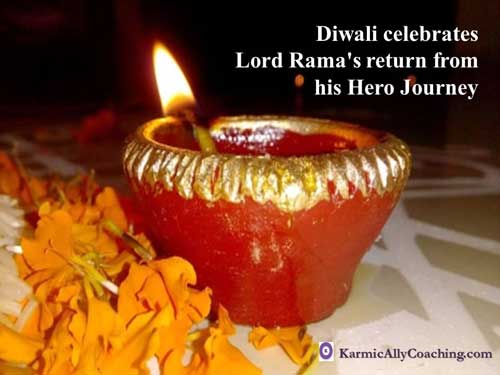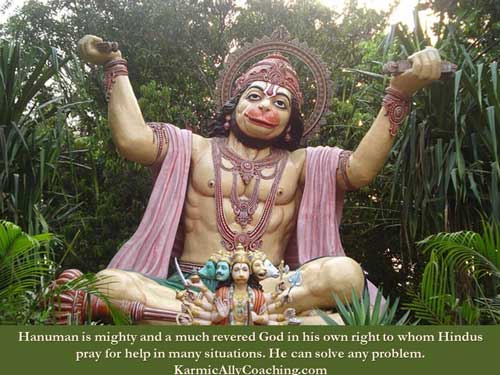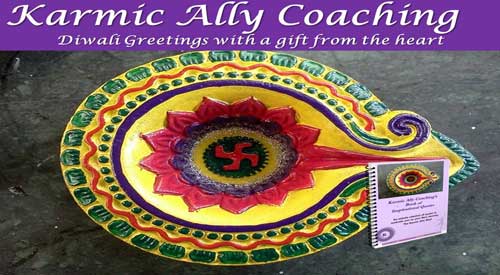This post has already been read 6652 times!

I celebrated Diwali in its full splendour for the first time at the age of 8 when my diplomat father had his first home posting in New Delhi.
As I write this post, memories come flooding back of white sugar candy elephants, camels and tigers; sweets, new clothes, firecrackers and lighting of diyas (clay lamps) and coloured candles.
I met my paternal cousins for the first time as 3 brothers and their families congregated at my Delhi-based Uncle’s home. The house was filled with the sound of happy children squealing with joy as our parents lit various firecrackers for us.
Unlike the commercialization of Diwali that I see nowadays, there was a sense of community back then. We had a few firecrackers of course but the main event was lighting diyas, dressing up in new clothes, giving gifts and a hearty family meal.
Having a family elder read from the Ramayana and learning lessons from this Hindu mythological epic was part of the celebrations.
On Diwali night, little clay lamps are lit in Hindu homes although nowadays coloured electric lamps are also used. The lighting of lamps is a way of paying obeisance to god for attainment of health, wealth, knowledge, peace, valor and fame.
In Hinduism, darkness represents ignorance, and light is a metaphor for knowledge. Therefore, lighting a lamp symbolizes the destruction, through knowledge, of all negative forces.
Diwali celebrates Lord Rama’s return from his Hero Journey
From the mythological perspective, Diwali is the day Lord Rama’s 14 year exile ended and he returned to Ayodhya with his wife Sita and brother Lakshman having vanquished Ravana the Demon King of Lanka.
A much-loved Crown Prince, he was unjustly sent into exile on the day of his coronation. One of the King’s wives (a former warrior princess) decided to call in a boon the King had granted her years earlier when she had sacrificed her finger to keep her husband’s chariot wheel from falling off during a battle.
She asked for Rama to be sent into exile in the forests and her son Bharat to ascend the throne as King instead.
Lord Rama, the dutiful son agreed so that his father could honour his word. His wife Sita and brother Lakshman decided to join him in exile.
The aged King Dasharatha died pining for his beloved son. Bharat came after Rama begging him to return. He served as a caretaker King while he waited for his elder brother to return.
We see intrigue and power grabbing plays even today, whether it’s in politics or in the workplace.
14 years later, the much-awaited day for Lord Rama’s return came and the entire kingdom was happy.

The return happened on an Amavasi or No- Moon night. Knowing the sky would be dark, the people of Ayodhya lit diyas to light the way home as Lord Ram flew into the city in Ravana’s Pushpak Viman (a flying machine).
Ramayana is the story of Rama’s Hero Journey as told by the Sage Valmiki. The story also has teachings and lessons relevant to our modern day lives.
If you aren’t conversant with the Ramayana, here is a video I found from AppuSeries that tells the story in a nutshell.
As the years have gone by, my understanding of the Ramayana has evolved as I find new facets and lessons in Lord Rama’s Hero Journey.
Here are 3 of them that are relevant to life and work and what we can expect during our own Hero Journey.
Circumstances arise and events take place leading us to answer our Call to Adventure
As a child I thought Queen Kaikeyi who came under the influence of her maid and asked for the boon was wicked to send Lord Rama into exile where he spent his time killing demons that were troubling the sages and playing havoc during rituals and prayers.
Then he had to save his wife who was kidnapped by Ravana to avenge Lakshman’s cutting off Ravana’s sister’s nose.
Rama and Lakshman ended up roaming in the forest looking for Sita and found their way to Lanka spending quite a few years of their exile preparing a bridge from India to Lanka in order to rescue Sita.
This bridge known as Ram Setu can be seen by satellite and even though water now flows above it, way back in 2004, I read that this underwater structure helped in mitigating even more damage from the 2004 Boxing Day tsunami.
When I look at the story now, Rama, who is an avatar of Lord Vishnu, was sent to earth to vanquish Ravana, a highly talented and erudite man.
Ravana built his capital city with gold, managed to capture the planets and trap them face down near his throne when he discovered that his beloved son was born with inauspicious planetary afflictions. He is supposed to have built a staircase to the moon.
He was also a great devotee of Shiva and had received the boon of immortality with a caveat that could cause his death.
Somewhere along the way he had become arrogant and harassed everyone – the planets, sages, the Gods and Vishnu had to come and put a stop to it.
Come to think of it, Destiny was at play here and if Kaikeyi had not asked for her boon, Rama and Sita would have stayed in Ayodhya and Ravana would have continued tormenting everyone.
The Ramayana would never have been written because there wouldn’t have been a Hero’s Journey to narrate because Rama, Sita, Lakshman and Hanuman who are avatars of Vishnu, Lakshmi, Sheshnag and Shiva respectively would not have fulfilled their Life Purpose!
The ever-dutiful Rama accepts his exile even though it is unfair. He honours the Warrior Code by protecting the Sages who are harassed by the Demons. The final straw on the camel’s back in the form of Sita’s abduction ignites the Call to Adventure and fulfilling his destiny.
The scene is set in the forests and one event after the other leads to the great battle where Ravana is killed. The significance of the triumph of good over evil is established on Dusshera Day and then the journey home on Diwali.
Qualities that a Hero needs are evident long before he gets his Wake Up Call
We all possess qualities that lie dormant until an event takes place that brings those qualities to the fore when they are really needed.
Early in the Ramayana, we learn about Sita’s Swayamvara where she chooses her husband from the mightiest warriors of the land. Her father, King Janak wants only the best for his beloved daughter. The test is to lift the heavy bow of Lord Shiva which is in his possession.
Many kings try and fail but young Rama, not only lifts the bow but breaks it, thus revealing his superhuman powers. He is an avatar of Vishnu and the qualities of confidence, courage, fortitude and strength are important during his Call to Adventure.
When you accept your Call to Adventure, helpers and Guides appear as required with required Tools and Knowledge
We don’t have just one Hero’s Journey during a lifetime but many whenever transformation is required.
Think about it, whenever you’ve faced a major challenge, haven’t new friends appeared who helped you find a resolution to your challenge?
Similarly while Lord Rama and Lakshman searched the forest for Sita, they met with Sugriva, King of the Monkeys who too is in exile and in many ways he too needs help to regain his kingdom and wife.
Rama and Lakshman help him and in return he offers his army to help rescue Sita.
The most important help comes from the son of the Wind God, Hanuman who is also the avatar of Lord Shiva.

Hanuman is mighty and a much revered God in his own right to whom Hindus pray for help in many situations. He can solve any problem.
In the Ramayana, he is the Helper who leaps across the ocean and reaches Sita.
He is perfectly capable of rescuing Sita and bringing her back to Ram. Sita stops him because she knows it is Rama’s duty to rescue his wife. This is another instance of destiny bringing Ram nearer to his true purpose.
To digress a little, Hanuman’s Day of worship is Tuesday. In the Ramayana, after meeting Sita, Hanuman allowed himself to be captured by Ravana’s soldiers.
Thinking he was an ordinary monkey the Court decided to burn his tail for amusement. Just before they could do it, Hanuman flipped his tail at the throne managing to turn Shani’s face upward.
Once Shani or Saturn as we call him was able to look up, his powers returned, and Ravana’s time of doom start. Hanuman changed his size and lit up Lanka with his fire lit tail!
Shani was grateful to Hanuman and decreed his worship to be also done on Saturdays.
There are other instances in the Ramayana where Hanuman saves the day helping Rama with his cause even though he can take care of it himself.
One of the most important Allies in the epic comes in the form of Vibheeshana, Ravana’s brother, who is banished because he advises Ravana to give back Rama’s wife.
It is Vibheeshana who shares secrets of how to handle Ravana’s army and the biggest secret of where Ravana’s life source lies. This enables Rama to finally kill him.
On the auspicious occasion of Diwali, I’d like you to reflect on your own life and the challenges that you have faced.
Have you noticed how circumstances have led to the change that was required, that you discovered you really had the skills to overcome the challenge and help arrived just as you hit rock bottom?
If you want to take a deeper dive into your Hero Journey, check out my book Wakeup Call: What Happens When You Accept Your Call to Adventure.





 I adhere to the Certified Coaches Alliance Code of Ethics and Standards. A copy is available on request.
I adhere to the Certified Coaches Alliance Code of Ethics and Standards. A copy is available on request.
 Let's Talk through the Connect Form:
Let's Talk through the Connect Form:
Vatsala, how thoughtful of you to share your celebration of Diwali with us. I know that the hero’s journey is something that Joseph Campbell found in the stories of many different cultures. The greater lesson being that we each are on an adventure as we discover ourselves through challenges. But, most importantly, we have guides. With each year, I can look back at where I have been, what territory I have covered and what challenges lie ahead. It’s nice to know there are guides along the way and that you eventually return home. Also, thank you for including the video. It’s going to be my bedtime story tonight.
The guides and helpers are always there for us when we are on a change creating journey, Joyce, though we only realize it after the event. Hope you enjoyed the video. I was lucky to find it and I feel my guardian angels guided me to it because I wanted to share the Ramayana in the easiest manner possible.
Your beautiful spirit adds so much depth to any text you describe; I’m grateful for you, my friend! Perhaps we could all be heroes with a guide like you ~
Warmly,
Andrea
Thank you for your kind words, Andrea. If I can make a difference for even 1 person, I will consider my mission to be successful.
Beautiful story and tradition. Wonderful imagery and creativity on one page!
Thank you for your kind words, Nathalie. This post is very dear to me and receiving a compliment from an artist has made my day!
Wonderful article. Although I have studied and been inspired by so many Hindi traditions, I still learned so much from you. Thank you for taking the time to educate and inspire!
My pleasure, Teri. Delighted I’ve added more to your knowledge about Hindu traditions and mythology!
How inspiring Vatsala! I knew nothing of Diwali, what a beautiful story and tradition. To answer your question, I absolutely agree that when we muster the courage to try, more often than not we discover we have more strength and ability than we realized to rise above our challenges. Thank you, what a lovely way to start the day my friend. 🙂
Thank you for your wonderful compliment, Marquita. The Hindu tradition is full of stories with lessons that are similar to Aesop’s Fables and the Mahabharata and Ramayana have many more lessons told in story form to teach the reader about life, ethics, duty, principles and especially how circumstances can affect our perspectives and actions.
Beautiful post, Vatsala. The color, imagery, lore and wisdom of the Ramayana are irresistible and I look forward to learning more. Like the shares I’ve done in my tradition, I appreciate your drawing forth the life lessons that are there for us in this epic story. On a more personal note, I am receiving so much encouragement from the Universe – your post included – to accept the call to adventure and trust that the assistance I need will be there once I set out. Or, as another friend recently put it, “Jump out of the nest and learn to fly on the way down!” A call to adventure, indeed!
I love the idea of jumping out of the nest and learning to fly, Reba. It is true, when we are on our true Life Mission, the Helpers and Guides appear to help us at each stage – and that is so true for the work you are doing!
Thanks so much for this post, Vatsala! It brought back my own memories of Diwali and I enjoyed reacquainting myself with the epic story. I didn’t realise the life lessons included in it before. Happy Diwali!
Happy Diwali to you too, Vanita. There are lots of other lessons hidden in the Ramayana that we discover as we progress in Life. I’m glad you enjoyed the post and reacquainting yourself with the epic. 🙂